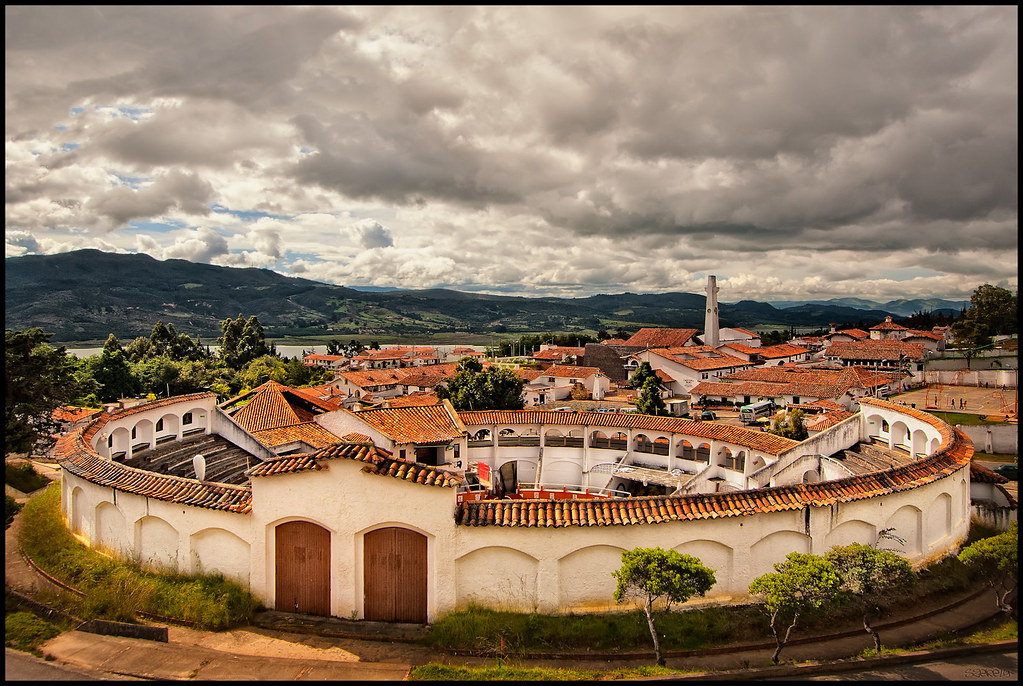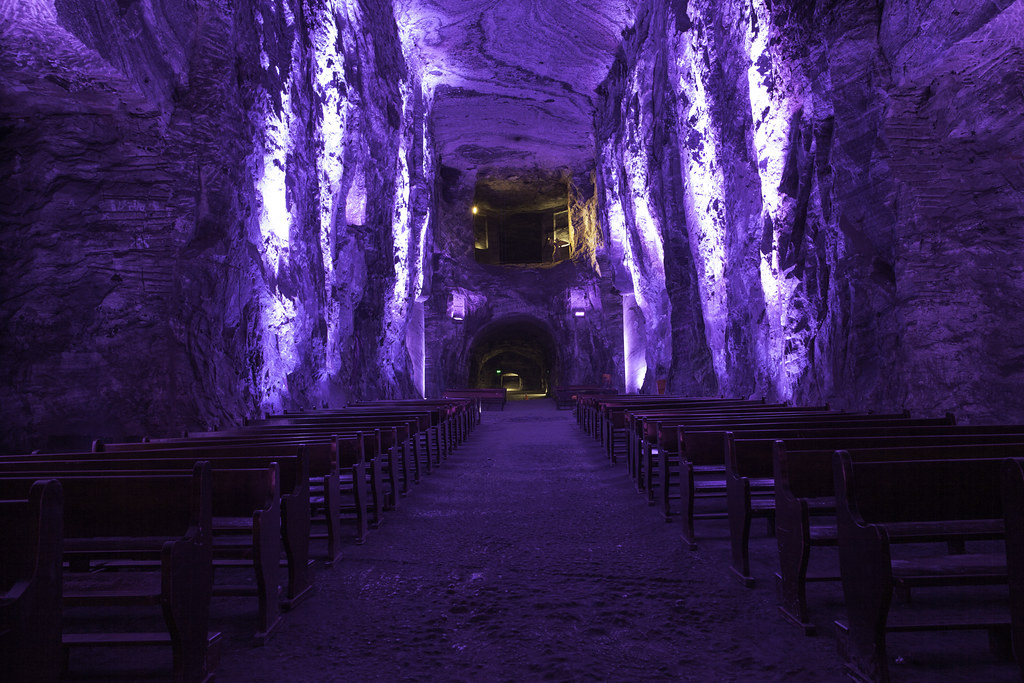
The new village of Guatavita
In the heart of Colombia, there are some marvelous places, full of history and myth. In Cundinamarca, the Muiscas were a native tribe who created the legends that explain the origins of the world, such as the legend of the Tequendama Falls, or that of the origin of the Muisca people, or that of the lake Guatavita.
Guatavita, the Lake of Gold
65 km outside Bogotá, there is a magic little village, surrounded by scrub and trees that gives the impression of being far from any civilization, a place full of legends and houses which bring to mind the old settlers, bemused by the beauty of the world around them.
According to legend, the Muisca Raft crossed the waters of Guatavita, and this was where El Dorado began.
Guatavita holds the secret of Eldorado. The legend says that the heir of the chief (Cacique) covered his body with gold dust, and then sailed out on a raft made of gold to the centre of the lake, to cast solid gold offerings into the water for the gods. When he finished doing that, he would then dive in and wash himself in the chilly water. This is the way that each new “cacique” was “inaugurated into office”.
The village, a replica of the old Guatavita, is composed of little white-walled houses with tiled roofs looking out over the green of the lake, today the dam of Tominé. In the main square, smiling women sell multi-colored candies made from fruit, milk and bread.
Tominé, an old village under the water

The dam of Tominé, covering the old village of Guatavita
Where old Guatavita stood is now flooded over by the dam of Tominé, created to provide Bogotá and its surrounding areas with electricity.. Its main attractions are launch trips to the island in the middle of the lake, and water sports such as kayaking. The old Guatavita lies at the bottom of this lake, as if sleeping, and the whitewashed houses are now covered with moss and emerald green lichens- You can also walk round the edge of the dam or ride round the edge of it riding on a fine Colombian-bred horse; and perhaps go camping for a night. And since this is a land for history, why not visit the indigenous museum, and find out about the culture which occupied a good part of Cundinamarca?
The Neusa dam, Chingaza Park and the salt cathedral in Zipaquira.

The Salt Cathedral, Zipaquirá.
One of the best places for camping, or cooking a meal in the open and or engaging in water-sports is the Neusa Dam, 80 km (an hour and a half) out of Bogota to the north. The climate is cold, and the water looks green under the reflection of the sky on sunny days on sunny clear days. The dam is 3,000 m above sea level, the average temperature is 10°C, and on a cold day may go down to -3°C: it is essential to take warm clothing. A good time to visit Neusa is January, when the weather is dry and the days are warm. Perfect for a ride in a dinghy, fishing for trout, or trail-walking.
Cundinamarca is full of pretty little villages.
Chingaza is an old ceremonial centre of the Muiscas. Today, it is a páramo, home to the frailejón plants, and species which are in danger of extinction such as the spectacled bear, pumas, and the mighty condor of the Andes. The scenery looks as if it was taken from one of those historical epics, in which magic steals the scene, and a beautiful lake sleeps under it all.
In Cundinamarca there is also something in religious tourism. This is the Zipaquirá salt cathedral, hewn out of solid rock and mineral salt, following the sequence of the Stations of the Cross, illuminated with colored lights.























